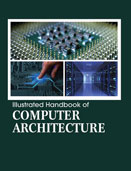Handbooks

This comprehensive, illustrated text provides that precarious understanding of a central processor by clearly detailing fundamentals, and cutting edge design features. Computer architecture is a specification detailing how a set of software and hardware technology standards interact to form a computer system or platform. In short, computer architecture refers to how a computer system is designed and what technologies it is compatible with. As with other contexts and meanings of the word architecture, computer architecture is likened to the art of determining the needs of the user/system/technology, and creating a logical design and standards based on those requirements. This includes all hardware components in the system, including data processors aside from the CPU, such as the graphics processing unit and direct memory access. It also includes memory controllers, data paths and miscellaneous things like multiprocessing and virtualization.
In computer engineering, computer architecture is a set of rules and methods that describe the functionality, organization, and implementation of computer systems. Some definitions of architecture define it as describing the capabilities and programming model of a computer but not a particular implementation. The purpose is to design a computer that maximizes performance while keeping power consumption in check, costs low relative to the amount of expected performance, and is also very reliable. Computer architectures usually trade off standards, power versus performance, cost, memory capacity, latency and throughput. Sometimes other considerations, such as features, size, weight, reliability, and expandability are also factors.
Illustrated Handbook of Computer Architecture brings a concise introduction to the subject matter, by clearly detailing fundamentals, and cutting edge design features.
Computer organization also helps plan the selection of a processor for a particular project. Multimedia projects may need very rapid data access, while virtual machines may need fast interrupts. Sometimes certain tasks need additional components as well. For example, a computer capable of running a virtual machine needs virtual memory hardware so that the memory of different virtual computers can be kept separated. Computer organization and features also affect power consumption and processor cost. There are many benefits in learning computer architecture for coders. Caching is now a very fundamental aspect in most computers. The on-chip cache size determines how much data can be brought on chip to be processed. Knowing this size can allow a programmer to process data in chunks, where the chunks can easily fit on the cache. This results in more cache hits, which increases program performance. Computer organization helps optimize performance-based products. Computer organization also helps plan the selection of a processor for a particular project. Multimedia projects may need very rapid data access, while virtual machines may need fast interrupts. Sometimes certain tasks need additional components as well. The Illustrated Handbook of Computer Architecture aims to present an overview of the current state-of-the-art in computer architecture, with a special emphasis on methods for exploring processor architectures. This Handbook is predominantly useful for students and researchers in the field of Computer Science and Technology.